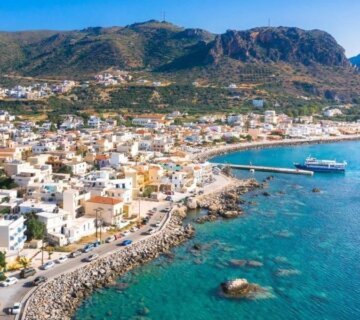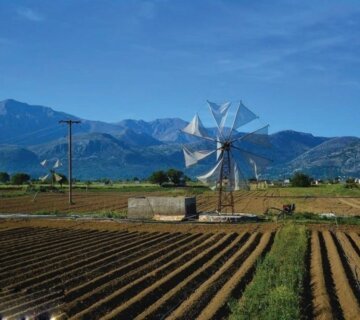Knossos Palace was the ceremonial and political center of the Minoan Civilization during the Bronze Age. Considered as Europe’s oldest city, Knossos was once the city-state of Crete, with the town surrounding the hill the palace is on. The area actually has a very long history of human habitation, from the first Neolithic settlement around 7000 BC, until 1500 BC, when the surrounding city had a population of 100,000. The palace suffered through an earthquake but then was reconstructed. It’s believed that the palace was abandoned around 1380 to 1100 B.C. for largely unknown reasons.
The excavation and exploration of the site have provided historians with a wealth of knowledge and insight into the Minoan Civilization. Tools like clay and stone incised spools and whorls point to a cloth-making industry and curvaceous female figurines indicate the worshipping of mother goddesses. The palace structure we see today is not exactly as it looked in its original time, due to reconstruction and renovation throughout the years, and it is considered by some archaeologists as a facsimile. The palace complex is not believed to have just been the residence of the monarch but also as the civic, religious, and economic center of Knossos.
Thus on the west side of the palace, there are the ceremonial halls on the upper floors and the public storerooms. Additionally, there are the sanctuaries, the treasuries as well as the throne room. In the southwestern part of the palace, are the Western Courtyard and the Western Entrance leading to the Procession Corridor. The latter was decorated with frescoes. On the left side of the corridor, are the Propylaea and the famous Double Horns. The Double Horns are one of the sacred symbols of the Minoan religion.
On the east side were the royal apartments, which led to a large staircase, staff rooms, and a sanctuary. Among the most important rooms are the Double Ax and the Queen’s Apartment with the dolphin mural. To the north and east of the queen’s apartment are the main warehouses as well as the Zatriki Corridor. In the Zatriki Corridor, the ancients used to play a type of chess called ‘Zatriki’. Further east was the various workshops, as well as the royal warehouses. The north wing is dominated by the “Customs”, a tank of purges, and a stone theater. From the theater starts a Cobbled Road that led to the small palace. Finally, in the south wing, there was the majestic south Propylos.







